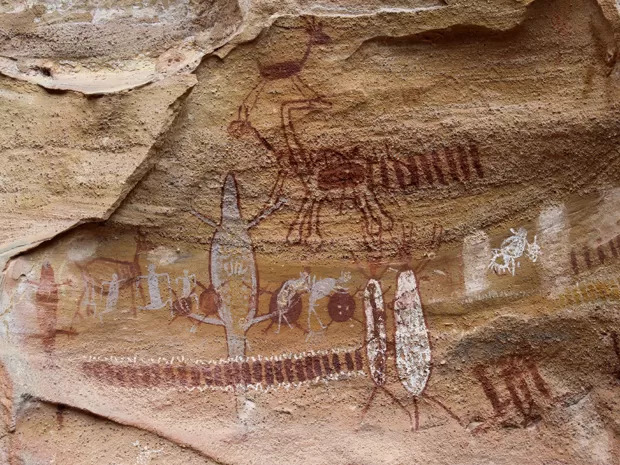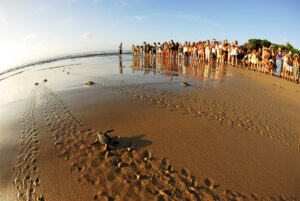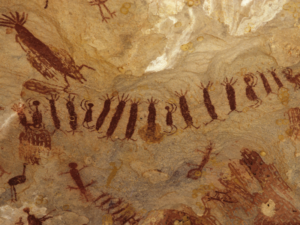
We have already talked about some modalities of tourism practice, such as community-based tourism (a way to do it) and segments such as ethnotourism, nature tourism, and many others. It is still necessary to discuss and explore more details about scientific tourism. Do you know of and understand its importance?
Scientific tourism has the main objective of producing knowledge in the most diverse areas. It is done by researchers, students, scientists, and all those who want to gain knowledge while visiting a place, having passive or active participation in the generation and dissemination of knowledge. This type of tourism is recognized by the SNUC (National System of Conservation Units) as one of the low-impact visitation strategies in natural parks.
A curiosity: this practice, in fact, is quite archaic, and one of the most well-known names in scientific tourism, if you can say so, was the famous biologist Charles Darwin. According to Balbúrdia Magazine, from the University of São Paulo (USP), Darwin spent five years traveling around the coast of South America in order to update British nautical charts. However, upon arriving here, he came across a multitude of species and subspecies of animals that he had never seen. The result of this was the revolutionary “Theory of Evolution”.
Success Stories in Brazil
The combination of scientific tourism and ecotourism can involve, for example, knowledge about local socio-biodiversity. In some cases, this knowledge can be directed to a specific object, such as the well-known Tamar Project. The Tamar initiative is a private, non-profit institution and co-executor of the National Action Plan for the Conservation of Sea Turtles in Brazil, of ICMBio/MMA.
Present in 23 locations in eight Brazilian states: Rio Grande do Norte, Pernambuco, Sergipe, Bahia, Espírito Santo, Rio de Janeiro, São Paulo and Santa Catarina, the project develops research, management and protection actions of the five species of sea turtles native to Brazil. In addition, Tamar has activities of community involvement, social inclusion, environmental awareness and education, appreciation of local culture, as well as generating opportunities for work and income.
Here at Raízes, we were able to contribute with initiatives that address scientific tourism as one of its strategies in 2021 in the business mentoring project for Tourism + Sustainable, in 2022, with the Sociobiodiversity Business Acceleration Program, and in 2013, with the Arara Azul Institute. Soon, we will bring forth more content on the subject, sharing the experiences of those who are in charge of these projects.
Contributing to the history of humanity
Many monuments are part of the history of humanity and attract thousands of tourists curious to know about them every year (in a modality of cultural tourism) or to study them in more depth (in scientific tourism). The Colosseum in Italy, the Acropolis of Athens in Greece, and the Pyramids of Egypt, are some examples. Here in Brazil, we also have places that show evidence of ancient civilizations and that are open to the public in order to bring knowledge about our history.
The Serra da Capivara National Park is one such place. Located in the state of Piauí, it was created in 1979 in order to preserve archaeological remains of the presence of mankind in South America dating from the prehistoric era. Its demarcation was completed in 1990, and the park is overseen by the Chico Mendes Institute for Biodiversity Conservation (ICMBio).
The rock records are tangible evidence of the richness of the cultures of the peoples of Brazil’s pre-colonial past. Both the Park and the Museum of the American Man, also located in the Serra da Capivara National Park, are open to visitors to present beautiful natural landscapes, share the history of humanity, as well as disseminate knowledge about the history of the place and the process of discovery of these records, along with the preservation actions that have been made.
It is important to keep in mind that recognizing the Scientific Heritage of a region and making it accessible to society as a tourism possibility can be an important strategy for social, educational, and economic growth. Therefore, the importance of strengthening this activity and presenting it more and more as an incredible tourism option cannot be underestimated!
And you, did you already know about this type of tourism?
Photo¹: Reproduction/G1 – Pedro Santiago
Photo²: Reproduction/Tamar Project
Photo³: Reproduction / Freeway Travel



